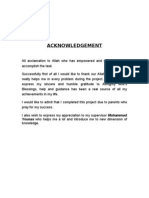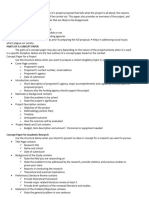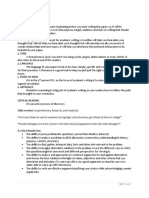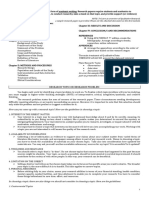0 ratings0% found this document useful (0 votes)
20 viewsAcademic Text: By: Mg. Jorge Gonza
Academic Text: By: Mg. Jorge Gonza
Uploaded by
Jorge GonzaAcademic Text, Descriptions, Explanations, Argument, Process, Narrative, Main Idea, Message, Thesis, Main Point, Opinion, Claim, Concept, Classification, Characteristics, Steps, Causes, Reasons, Main Event, Important Event, History, Biography, Problem-Solution
Copyright:
© All Rights Reserved
Available Formats
Download as PPTX, PDF, TXT or read online from Scribd
Academic Text: By: Mg. Jorge Gonza
Academic Text: By: Mg. Jorge Gonza
Uploaded by
Jorge Gonza0 ratings0% found this document useful (0 votes)
20 views4 pagesAcademic Text, Descriptions, Explanations, Argument, Process, Narrative, Main Idea, Message, Thesis, Main Point, Opinion, Claim, Concept, Classification, Characteristics, Steps, Causes, Reasons, Main Event, Important Event, History, Biography, Problem-Solution
Original Title
Academic Text
Copyright
© © All Rights Reserved
Available Formats
PPTX, PDF, TXT or read online from Scribd
Share this document
Did you find this document useful?
Is this content inappropriate?
Academic Text, Descriptions, Explanations, Argument, Process, Narrative, Main Idea, Message, Thesis, Main Point, Opinion, Claim, Concept, Classification, Characteristics, Steps, Causes, Reasons, Main Event, Important Event, History, Biography, Problem-Solution
Copyright:
© All Rights Reserved
Available Formats
Download as PPTX, PDF, TXT or read online from Scribd
Download as pptx, pdf, or txt
0 ratings0% found this document useful (0 votes)
20 views4 pagesAcademic Text: By: Mg. Jorge Gonza
Academic Text: By: Mg. Jorge Gonza
Uploaded by
Jorge GonzaAcademic Text, Descriptions, Explanations, Argument, Process, Narrative, Main Idea, Message, Thesis, Main Point, Opinion, Claim, Concept, Classification, Characteristics, Steps, Causes, Reasons, Main Event, Important Event, History, Biography, Problem-Solution
Copyright:
© All Rights Reserved
Available Formats
Download as PPTX, PDF, TXT or read online from Scribd
Download as pptx, pdf, or txt
You are on page 1of 4
ACADEMIC TEXT
OVERVIEW
By: Mg. Jorge Gonza
DISCOURSE COMMUNITY
• DISCOURSE COMMUNITY
• In a way, there are many “Englishes”.
• For example, written English and spoken English are different: You don’t
speak as you write and vice versa.
• Same with setting, topic, and the relationship between speakers. Language
(grammar and vocabulary) varies.
• One of theses differences is the “discourse community”
• Our target Discourse Community is, in general, academically
educated speakers of English, under their educational system.
EXPLICIT, LOGIC, CLEAR (NOT
AMBIGUOUS)
• CHARACTERISTICS
• Unlike other types of text, Academic English texts must be
explicit in terms of IDEAS and FACTS.
• Accordingly, the message must be clear or unambiguous: every
reader or listener must understand the message in exactly the
same way.
• By contrast, in literature –for example– the ideas may not be
explicit and may be subject to interpretation. In journalistic
writing, the writer focuses on the facts rather than on the ideas.
STRUCTURE AND TYPES
MESSAGE TYPE MAIN IDEA KEY POINTS FACTS, EVIDENCE
1. Argument Main Point / Thesis / Reasons
[main idea] Opinion / Claim
2. Description Concept Classification; Statistics, reports,
IDEAS FACTS characteristics records, censuses,
3. Explanation Unexpected Causes prior research
[key points] [details & phenomenon / fact (journal articles),
experiment results,
examples] 4. Process Purpose / Result Steps (Verbs) surveys, examples
Rational Empirical 5. Narrative Main event Important
(history, bio) events
thinking evidence
Ideas + Facts = Support
You might also like
- Business Research Method AssignmentDocument40 pagesBusiness Research Method Assignmenthina_imtiaz20073792100% (4)
- Methods of Research (Calderon & Gonzales)Document24 pagesMethods of Research (Calderon & Gonzales)Surogste Mibusontad77% (13)
- QUARTER 4 WEEK 2 RESEARCH REPORT Purpose Stages PrewritingDocument7 pagesQUARTER 4 WEEK 2 RESEARCH REPORT Purpose Stages Prewritingsugarnicolas00No ratings yet
- EAPP_SECOND-QUARTERDocument6 pagesEAPP_SECOND-QUARTERbombayaaajaNo ratings yet
- English For Acad NotesDocument6 pagesEnglish For Acad NotesJobelle CajipoNo ratings yet
- Review Your Pre-Proposal by Giving Tick ( ) in Column Yes or NoDocument3 pagesReview Your Pre-Proposal by Giving Tick ( ) in Column Yes or NoPutri Nila SudewiNo ratings yet
- Argumentative EssayDocument23 pagesArgumentative EssayLer Ming BangNo ratings yet
- Lecture 1 ResearchDocument7 pagesLecture 1 ResearchCharles Wesley YapNo ratings yet
- Scientific Writing Workshop Vancouver, February 19, 2023Document55 pagesScientific Writing Workshop Vancouver, February 19, 2023Elaf LoloNo ratings yet
- Case Study and ObservationDocument25 pagesCase Study and ObservationFred ChukwuNo ratings yet
- Athens Training - Tips On Writing Dissertations - August 2009 - NGDocument6 pagesAthens Training - Tips On Writing Dissertations - August 2009 - NGkunal_sharma2811No ratings yet
- BRM Topic 7 - Writing Proposals and Project ReportsDocument23 pagesBRM Topic 7 - Writing Proposals and Project Reportssoyuz chitrakarNo ratings yet
- MS ELM First registratin & Thesis presentation templateDocument6 pagesMS ELM First registratin & Thesis presentation templateSami AbbasiNo ratings yet
- 2 Nature and Concept of Research ProblemDocument3 pages2 Nature and Concept of Research ProblemJumer GarciaNo ratings yet
- Yandhrie Arvian - Mengenal Audiens - Format 1-3-25Document30 pagesYandhrie Arvian - Mengenal Audiens - Format 1-3-25LilikNo ratings yet
- Reviewer in English 10 4th PTDocument3 pagesReviewer in English 10 4th PTJohn Lawrence PaduaNo ratings yet
- B H B - Research-TransesDocument3 pagesB H B - Research-TransesbabesNo ratings yet
- 3i's ReviewerDocument5 pages3i's ReviewerNELLA YOONNo ratings yet
- Technical Reports -Structure and Layout-Sem II 2022-2023Document5 pagesTechnical Reports -Structure and Layout-Sem II 2022-2023Mohammed AmmaarNo ratings yet
- Case StudiesDocument3 pagesCase Studiesyiseth montalvoNo ratings yet
- MODULE 4 CRITICAL READING Converted 1Document8 pagesMODULE 4 CRITICAL READING Converted 1Kerby PinedaNo ratings yet
- Pengenalan KPD Penyelidikan UmumDocument28 pagesPengenalan KPD Penyelidikan Umummohamad nor zamreeNo ratings yet
- Eapp Reviewer Q2Document5 pagesEapp Reviewer Q2Hyacinth ManiboNo ratings yet
- C1M L1a Reading Academic Text - G1Document12 pagesC1M L1a Reading Academic Text - G1Joseph VasquezNo ratings yet
- EAPPDocument22 pagesEAPPAra Joy ArnanteNo ratings yet
- Report WritingDocument8 pagesReport WritingcodewithibfNo ratings yet
- Introduction To Qualitative StudyDocument26 pagesIntroduction To Qualitative StudyDr. Muhammad Sofwan MahmudNo ratings yet
- Writing Academic Essays - StudentDocument14 pagesWriting Academic Essays - StudentKoel ChatterjeeNo ratings yet
- Research EthicsDocument17 pagesResearch EthicsCarla ArceNo ratings yet
- Parts of A Reserach PaperDocument7 pagesParts of A Reserach PaperMoon KillerNo ratings yet
- Lesson 1: Designing A Research Project Related To Daily LifeDocument11 pagesLesson 1: Designing A Research Project Related To Daily LifeMa. Rhona Faye MedesNo ratings yet
- Reseach Methods DesignDocument62 pagesReseach Methods DesignThelma SalvacionNo ratings yet
- BRM-Observation, Experimentation & SimulationDocument39 pagesBRM-Observation, Experimentation & SimulationTaimoor KhanNo ratings yet
- Journal AnalysisDocument20 pagesJournal AnalysisroashiimamuraNo ratings yet
- PR1 Handout 2Document6 pagesPR1 Handout 2andayalance154No ratings yet
- A Problem Well Stated Is A Problem Half Solved: ExampleDocument3 pagesA Problem Well Stated Is A Problem Half Solved: ExampleMeriem OuldjiNo ratings yet
- Inbound 4122464785543450329Document3 pagesInbound 4122464785543450329Diana Padilla TilladaNo ratings yet
- EAPP-Concept Paper 1 (Module 8)Document31 pagesEAPP-Concept Paper 1 (Module 8)Shiela DimayugaNo ratings yet
- Report-Converted 3Document6 pagesReport-Converted 3Rutuja SNo ratings yet
- Designing A Research Project Related To Daily LifeDocument26 pagesDesigning A Research Project Related To Daily LifeRellie Castro67% (46)
- Tajuk Terkini: Nama Penyelia: Bil AbstrakDocument2 pagesTajuk Terkini: Nama Penyelia: Bil Abstraksy zaNo ratings yet
- Eapp Summary of Lessons For Quarter 1Document2 pagesEapp Summary of Lessons For Quarter 1Mart ZedrickNo ratings yet
- Methods For Business ResearchDocument26 pagesMethods For Business ResearchZarish AzharNo ratings yet
- Module MORP M1 KOUSSADocument11 pagesModule MORP M1 KOUSSAToufik KoussaNo ratings yet
- Qualitative Data AnalysisDocument18 pagesQualitative Data Analysisbsunilsilva100% (2)
- Report WritingDocument5 pagesReport WritingIsha GuptaNo ratings yet
- EAPP, SANGPUTAN _20241111_075139_0000Document17 pagesEAPP, SANGPUTAN _20241111_075139_0000gwenchanaramyeonNo ratings yet
- Inquiry Research HandoutDocument14 pagesInquiry Research HandoutShane GumarangNo ratings yet
- How To Write and Publish Research PaperDocument59 pagesHow To Write and Publish Research PaperHam Yas100% (1)
- Lecture On Writing A Research ProposalDocument10 pagesLecture On Writing A Research ProposalCharmaine GalleneroNo ratings yet
- Assem Dandashly: Department of Political Science Maastricht UniversityDocument46 pagesAssem Dandashly: Department of Political Science Maastricht UniversityMarkNo ratings yet
- Materi PedaranDocument8 pagesMateri PedaranJapok TuhNo ratings yet
- Activity 1: What Am I? RW EW: English For Academic and Professional PurposesDocument7 pagesActivity 1: What Am I? RW EW: English For Academic and Professional PurposescasipleaineNo ratings yet
- Research Methodology Presentation - RevisedDocument220 pagesResearch Methodology Presentation - RevisedMark Kevin VidarNo ratings yet
- Research and Life Science Review 1st Quarter ExamsDocument5 pagesResearch and Life Science Review 1st Quarter ExamsBeth De los SantosNo ratings yet
- Publishing in AMJ 3Document8 pagesPublishing in AMJ 3joeeeojNo ratings yet
- How To Write Editorial ArticleDocument16 pagesHow To Write Editorial ArticleMaria Zarah MenesesNo ratings yet
- ChatGPT Guide to Scientific Thesis Writing: AI Research writing assistance for UG, PG, & Ph.d programsFrom EverandChatGPT Guide to Scientific Thesis Writing: AI Research writing assistance for UG, PG, & Ph.d programsRating: 4 out of 5 stars4/5 (1)
- How to Write a Dissertation: An Instructional Manual for Dissertation Writers.From EverandHow to Write a Dissertation: An Instructional Manual for Dissertation Writers.No ratings yet
- English Exam - 1 Prim - 2018 - Unit 2Document1 pageEnglish Exam - 1 Prim - 2018 - Unit 2Jorge GonzaNo ratings yet
- Countries and LanguagesDocument1 pageCountries and LanguagesJorge GonzaNo ratings yet
- TOEFL Factual and Inference QuestionsDocument2 pagesTOEFL Factual and Inference QuestionsJorge GonzaNo ratings yet
- "San Antonio de Padua": ENGLISH EXAM - 1st Grade - SecondaryDocument1 page"San Antonio de Padua": ENGLISH EXAM - 1st Grade - SecondaryJorge GonzaNo ratings yet
- ENGLISH EXAM - 4th Grade - Secondary: "San Antonio de Padua"Document1 pageENGLISH EXAM - 4th Grade - Secondary: "San Antonio de Padua"Jorge GonzaNo ratings yet
- ENGLISH EXAM - 2nd Grade - Secondary: "San Antonio de Padua"Document1 pageENGLISH EXAM - 2nd Grade - Secondary: "San Antonio de Padua"Jorge GonzaNo ratings yet
- ENGLISH EXAM - 3rd Grade - Secondary: "San Antonio de Padua"Document1 pageENGLISH EXAM - 3rd Grade - Secondary: "San Antonio de Padua"Jorge GonzaNo ratings yet
- English Exam - 1 Prim - Unit 3Document2 pagesEnglish Exam - 1 Prim - Unit 3Jorge Gonza100% (1)
- ENGLISH EXAM - 2nd Grade - Secondary: "San Antonio de Padua"Document1 pageENGLISH EXAM - 2nd Grade - Secondary: "San Antonio de Padua"Jorge GonzaNo ratings yet
- English Exam - Prim 3 - JulioDocument1 pageEnglish Exam - Prim 3 - JulioJorge GonzaNo ratings yet
- English Exam - 2 B Prim 1. JulioDocument1 pageEnglish Exam - 2 B Prim 1. JulioJorge GonzaNo ratings yet
- ENGLISH EXAM - 2nd Grade - Primary: I. Write The NumbersDocument2 pagesENGLISH EXAM - 2nd Grade - Primary: I. Write The NumbersJorge GonzaNo ratings yet
- English Exam Bim - Sec 4Document1 pageEnglish Exam Bim - Sec 4Jorge GonzaNo ratings yet
- English Exam 2 Bim - Prim 4Document1 pageEnglish Exam 2 Bim - Prim 4Jorge GonzaNo ratings yet
- English Exam - Sec 3 - 2012-04-04 (Apr 4th)Document1 pageEnglish Exam - Sec 3 - 2012-04-04 (Apr 4th)Jorge GonzaNo ratings yet
- English Exam - Sec 5 - 2012-04-04 (Apr 4th)Document1 pageEnglish Exam - Sec 5 - 2012-04-04 (Apr 4th)Jorge GonzaNo ratings yet
- English Exam - Prim 5 - 2012-04-04 (Apr 4th)Document1 pageEnglish Exam - Prim 5 - 2012-04-04 (Apr 4th)Jorge GonzaNo ratings yet
- ENGLISH EXAM - 2nd Grade - Secondary: "San Antonio de Padua"Document1 pageENGLISH EXAM - 2nd Grade - Secondary: "San Antonio de Padua"Jorge GonzaNo ratings yet
- English Exam - Sec 1Document1 pageEnglish Exam - Sec 1Jorge GonzaNo ratings yet














































































